To start a profitable fish farming business in Nigeria, choose the appropriate fish species based on market demand and environmental suitability, then set up the necessary infrastructure such as ponds or tanks, ensuring proper water management and feeding practices for the healthy growth of the fish.
Fish farming, also known as aquaculture, is a lucrative venture that provides a sustainable source of income and contributes to food security. If you’re interested in starting a fish farming business in Nigeria, this beginner’s guide will walk you through all the essential steps and information you need to know.
From choosing the right fish species to dealing with government regulations, we’ll cover it all. So, let’s dive in and explore the world of fish farming!
How To Start Fish Farming In Nigeria Step By Step
Fish farming has gained significant popularity in Nigeria due to its potential for profitability and the increasing demand for fish in the country.
By engaging in fish farming, you can contribute to meeting the local demand for fish, reduce dependence on imports, and create employment opportunities.
This comprehensive guide will equip you with the knowledge and insights necessary to embark on a successful fish farming journey.
Step 1: Choosing the Right Fish Species
Selecting the appropriate fish species is a crucial step in fish farming. Different fish species have varying growth rates, environmental requirements, and market demands. Some popular fish species suitable for fish farming in Nigeria include catfish, tilapia, and carp.
Read Also: 10 Profitable Animal Farming Business To Start In Nigeria
Factors such as market demand, water availability, and farming infrastructure should be considered when deciding on the fish species for your farm.
Step 2: Setting Up a Fish Farm
To start a fish farm, you need to consider various aspects, including land availability, infrastructure, and capital investment. It’s advisable to conduct a feasibility study to assess the potential profitability of your fish farming venture.
This study should encompass factors like market demand, competition, and production costs. Additionally, acquiring the necessary equipment and setting up fish ponds or tanks is vital for a successful fish farming operation.
Read Also: How To Formulate Fish Feed in Nigeria
Step 3: Decide On Aquaculture Systems To Use
Fish farming can be done using different aquaculture systems, such as earthen ponds, concrete tanks, or recirculating aquaculture systems (RAS).
Each system has its advantages and considerations based on factors like land availability, water supply, and investment capacity. Earthen ponds are the most common and cost-effective option, while RAS provides precise control over water quality but requires substantial investment.
Step 4: Pond Preparation
Preparing the fish ponds is crucial for creating a suitable environment for fish growth. This involves activities like clearing the land, constructing embankments, and ensuring proper drainage.
The size and shape of the pond should be determined based on the projected fish population and the available space. Adequate soil testing and liming are also essential to maintain optimal water quality and pH levels.
Read Also: Top 10 Biggest Fish Farm Projects in Nigeria
Step 5: Water Management
Proper water management is critical for maintaining healthy fish and maximizing production. Ensuring a consistent and clean water supply is essential, as fish require good-quality water to thrive.
Implementing effective water management practices involves regular monitoring of water parameters, such as temperature, dissolved oxygen levels, and pH. Proper aeration, filtration, and regular water exchange should be carried out to maintain optimal conditions.
Step 6: Stocking the Fish
After pond preparation and water management, it’s time to stock your fish farm with fingerlings or juvenile fish. The stocking density depends on the fish species, pond size, and water quality. It’s important to source high-quality fingerlings from reputable hatcheries to ensure the growth and health of your fish. Regular monitoring of fish growth, feed consumption, and water quality is essential during the stocking period.
Read Also: 12 Agritech Companies In Nigeria [Contact Info]
Step 7: Feeding and Nutrition
Providing proper nutrition to your fish is crucial for their growth and overall health. Commercial fish feeds are readily available and formulated to meet the specific dietary requirements of different fish species.
Feeding frequency and quantity should be adjusted based on the fish’s age, size, and environmental conditions. Supplementary feeding with locally available feed sources, such as kitchen waste or agricultural by-products, can also help reduce feed costs.
Step 8: Disease Prevention
Fish are susceptible to various diseases, which can severely impact the success of your fish farming venture. Implementing disease prevention measures is crucial to minimize losses and maintain healthy fish.
Read Also: [Beginners Guide] How To Start Cricket Farming In Nigeria
Good water quality, proper nutrition, and regular health monitoring are essential preventive measures. It’s also advisable to consult with fisheries experts or veterinarians for guidance on disease management and vaccination programs.
Step 9: Harvesting and Marketing
When the fish reach the desired size, it’s time for harvesting. Harvesting methods vary depending on the fish species and the intended market. Care should be taken to minimize stress and handle the fish properly during the harvesting process.
Establishing effective marketing channels, such as local markets, restaurants, or processing companies, will help you sell your fish and generate income.
Read Also: 10 Common Diseases Of Catfish In Nigeria And How To Treat
Government Regulations
Operating a fish farm involves compliance with various government regulations and permits. Familiarize yourself with the legal requirements and guidelines related to fish farming in Nigeria. These may include environmental regulations, fish health regulations, and permits for water abstraction or discharge. It’s important to obtain the necessary licenses and fulfill the regulatory obligations to operate your fish farm legally.
Fish Farming Investment and Profitability
Understanding the investment and profitability aspects of fish farming is essential for making informed business decisions. Calculate the initial capital investment required, considering factors such as land acquisition, infrastructure development, fish stock, and operational costs.
Conduct a thorough market analysis to estimate the potential revenue and profitability of your fish farming venture. Seek guidance from financial advisors or agricultural experts to assess the financial viability of your business.
Benefits of Fish Farming
Before delving into the intricacies of starting a fish farm, it’s essential to understand the numerous benefits it offers. Fish farming provides a stable source of income, as fish consumption continues to rise.
It also contributes to food security, helps in conserving wild fish populations, and promotes sustainable agricultural practices. Furthermore, fish farming can be integrated with other farming activities, such as poultry or crop farming, creating a diversified income stream.
Common Challenges Of Fish Farming Business In Nigeria
Like any agricultural enterprise, fish farming has its challenges. Understanding and preparing for these challenges can help you overcome them more effectively. Common challenges in fish farming include disease outbreaks, inadequate market access, fluctuating feed prices, and environmental factors like drought or floods.
Developing contingency plans and staying updated with industry trends and best practices will enhance your ability to tackle these challenges.
Vides of How To Start Fish farming Business In Nigeria:
Types of Fish Feeds in Nigeria
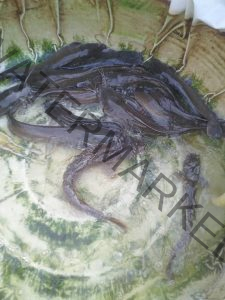
Dry Fish Foods
In Nigeria, you’ll find a wide variety of fish diets. Flake foods are another name for concentrations of fiber and minerals for fish-eating that are generated artificially.
Tropical fish (Nigeria is a tropical country) and salty fish alike typically eat these feeds. These fish feeds are designed to last for a long time on the shelf without losing their quality.
Read Also: 10 Common Diseases Of Catfish In Nigeria And How To Treat
Vacation Fish Feeds
Vacation fish meals, often known as ‘food blocks’ or ‘weekend blocks,’ are a substantial type of fish feed. To feed the fish in the aquarium, this food has been prepared and is ready to use.
Medicated Fish Feed
Medicating feed has been a common practice in agriculture for many years. The greatest way to administer medication to fish is through their food, which they will inevitably eat hook, line, and sinker, therefore the use of medicated fish food is the most efficient.
Read Also: [Beginners Guide] How to Raise Broiler Chicken In Nigeria
Unlike bath treatments, which can contaminate the pond, medicating fish feed has the major advantage of not doing so. It does not harm fish or the growth of algae in the fish pond, and it has no effect on either.
It’s nearly undetectable because it’s chewed up and flushed away by the natural flow of the water, leaving nothing behind.
Frozen Fish Feed
These are typically manufactured from mosquito larvae, water fleas, bloodworms, and daphnia, as well as brine shrimp or other sea creatures. Instead of drying the components, they are packaged in resealable pouches and frozen, rather than dehydrating.
Read Also: [Beginners Guide] How to Raise Layers for Egg in Nigeria
Perishable and damaged fish can contaminate ponds; thus they should be kept frozen by the supplier until they are sold. Frozen tropical fish feed is made from the same natural feed that the fish consume in the wild.
Step By Step Guide To Fish Hatchery Process.
There are two types of hatchery; indoor and outdoor hatchery.
Tools needed To hatch fish:
1) Cacaban or Net
2) plastic containers
3) Spoon
4)saline water
5) towel
6) salt
7) ovulin
Step One: prepare the gravid broodstock
To start hatching, we need gravid broodstock; matured male and female fishes that are at least 12 months old.
Step Two: Inject the female brood with Ovulin
The female brood will be injected with ovulin. Injecting the ovulin is to prepare the eggs for easy stripping. This fish will be injected at least 9 hours before the day of hatching.
Step Three: Extract the male sperm sac
Then, the male will sperm sac will be extracted in a bowl and add saline water this is to make it less active.
Read Also: Disease Prevention and Control In Nigeria Poultry PDF
Step Four: strip the female eggs
The next is to strip the female eggs. A wet towel will be used to cover the female broodstock, this is to calm the fish, then strip the egg in a bowl.
Step Five: Add male sperm to the collected eggs
After stripping, the male sperm will be added to stripped eggs, Stir together thoroughly.
Then the stirred eggs will be spread on the cacaban (net) that has already been spread in the pond filled with water. The purpose of spreading the eggs on a net is to prevent the unhat eggs from polluting the water, which might infect affect the fries.
Read Also: How To Start Poultry Farming In Nigeria [Full Guide]
Step Six: Cover the pond
After this, the pond will be covered the generate heat, which will make the fries hatch fast. The hotter the weather the faster the fries come out.
12 hours after, or less depending on the weather if it is an outdoor hatchery, your fries will be out.
Cost Of Starting A Catfish Farming In Nigeria
The cost to start a catfish business depends on the type you are willing to start, but you must have at least 300,000 to 500,000 nairas.
You need at least 3 ponds. If you’re going into table size fish which is around 700g to 1kg and above, you need t least 3 ponds. This is to enable sorting as the fishes grow.
To get a plastic pond, 3000 liters is around 75000. A Tarpaulin pond of 7 ft by 5 ft by 2 and a half feet costs around 35 – 40k per one.
Common Types Of Fish Farming In Nigeria
Catfish
Catfish farming is Nigeria’s most popular aquaculture enterprise because of the fish’s widespread appeal. A wide variety of African establishments, including houses, restaurants, festivals, and hotels, use catfish as the most prevalent fishing product.
Most aquaculture farmers grow catfish because they are easy to cultivate and in high demand. It can be raised on a small or large scale, according to on the farmer’s preference.
Creating ponds and raising fingerlings or juveniles to maturity are all part of the catfish farming process. As a result, individuals tend to gravitate toward the fish species that are the most straightforward to raise.
Tilapia
Freshwater fishes that live in shallow streams, ponds, rivers, and lakes are used in this fish farming operation. Aquaculture systems around the world are increasingly relying on them.
Fast growth and tolerance for high stocking densities and poor water quality make this breed a profitable one for fish farmers to cultivate.
In Nigeria, tilapia is one of the most popular fish species grown for consumption. It’s a warm-water fish with a high growth rate and greater sizes than other fish.
For the most part, Tilapia fish are found in freshwater environments such as ponds and lakes, rather than in brackish water. Tilapia is a fast-growing and easy-to-grow fish that is popular in the Nigerian market.
Salmon (Mackerel)
For the most part, salmon are migratory freshwater fish that return to spawn in their native waterways after spending time in the sea. They can be caught in the wild, but they can also be raised in zoos. Nigerians consume a large proportion of their fishery products from salmon. In Nigeria, they are referred to as “Titus” and are purchased by millions of people every day.
Feed and Feeding Methods for Fish Farming in Nigeria
All animals grow healthily when fed properly, and feeding is the most crucial factor in their development.
If you’re running a business for profit, you’ll want to use foreign feeds, even if fish have distinct dietary needs. This is because the business is primarily for profit and you want the fish to grow quickly so that you may recoup your investment as quickly as possible.
Arginine, methionine, and lysine are all important amino acids present in crude protein sources, and providing them in the diet will maximize fish productivity in Nigeria.
Fishmeal is the best source of crude protein for this purpose. As an alternative, you can utilize traditional and sometimes unusual animal by-products and plant residues that suit the nutrient requirements of catfish (such as groundnut cake, and soya bean cake, for example).
In order to keep production costs as low as possible, this is being done. This guarantees that the fish get enough food to grow at a faster rate.
How much does it cost to start a fish farm in Nigeria?
The cost to start a catfish business depends on the type you are willing to start, but you must have at least 300,000 to 500,000 naira.
Which fish is best for farming in Nigeria?
The best fish for farming in Nigeria is the Catfish.
Fish aquaculture is a well-established and lucrative enterprise. And the demand for catfish is on the rise as well. Catfish farming is one of the most popular in Nigeria, where there is a high demand for all fish farming.
Is fish farming profitable in Nigeria?
Yes, fish farming is profitable in Nigeria with at least 60 percent return on cost for raising one fish each.
You may make N380, 000 in sales selling 1 kg of fish at the current market price of N800 (475 X N800). Your gross profit margin is 22.58 percent if you have invested N310, 000 and sold N380, 000. Farming catfish does not generate much profit. As long as the market is strong, you won’t be selling every day and week.
How many catfish can you have in a 1000 Litre tank?
You can keep about 26 to 30 fish in 1000 liter of tank
How many bags of fish feed 1000 fish?
You need just a bag of fish feed to feed 1000 fish.
How long do catfish take to grow in Nigeria?
Averagely, fish takes about 24- 36 weeks to grow to the full stage.
How many months does it take fish to mature?
Between 6 to six months.
How many times should catfish be fed in a day?
During the summer, most catfish farmers feed their fish once a day, seven days a week. Feeding fingerlings twice a day may help their growth marginally, but on big catfish farms, the practicalities of frequent feedings make this unfeasible. Mechanical feeders are commonly used to disperse feed on the surface of the water.
How big of a pond do you need for catfish?
The ideal size of a fish pond is about 5 to 7 acres of farmland
Do catfish need sunlight?
Yes.
Other than water plants, all of the plants utilized in catfish feed are totally reliant on sunlight for their energy. Slightly warm water is ideal for tropical catfish, who thrive in it. Direct and indirect effects of the sun’s heat are used to control the temperature of the water in ponds.
How deep does a catfish pond need to be?
Aquatic vegetation problems can be minimized by using ponds with a depth of at least eight feet and an edge slope of three feet or more. The water-holding capacity of soil should be evaluated for building ponds.
How do you make catfish grow faster?
purchase juvenile fish.
make sure they are the shooters.
avoid overstocking.
verify the source of the water.
include an inlet and outlet.
buy quality feed with high protein.
use live bate.
buy soy-rich feed.
How much is catfish 2022 Nigeria?
1kg catfish is sold at N1000 to N1200.
How do you calculate fish feeding?
ABW (Average Body Weight) = 1.5g. …
Formula = ABW × FR × Fish Population. = 1.5g × 10% × 1000.
= 150g/day.
@ 10:00hrs.
Feeding = 20% × 150g = 30g.
@ 12:00hrs.
Feeding = 30% × 150g = 45g.
@ 14:00hrs.
Conclusion
Fish farming is one of the booming sectors in animal husbandry that many people are keying into, it is not a bad idea if you give it a try,
Do not forget we are always here to help you anywhere you are facing difficulties with your farm, wish you the best of luck!
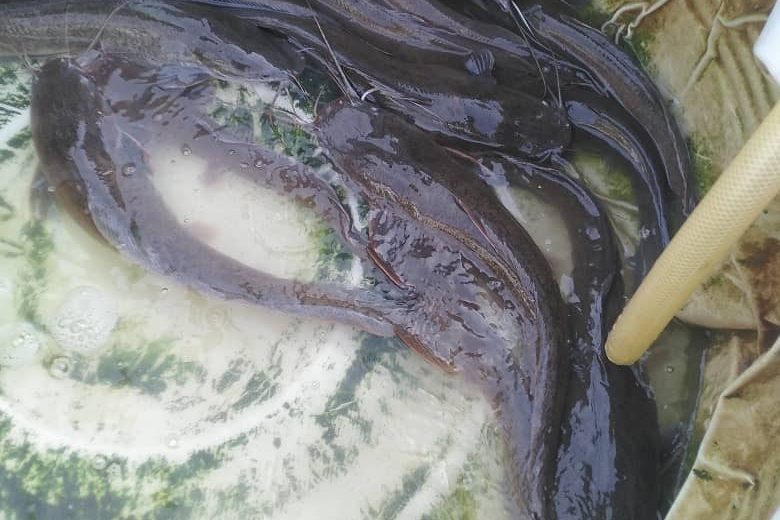
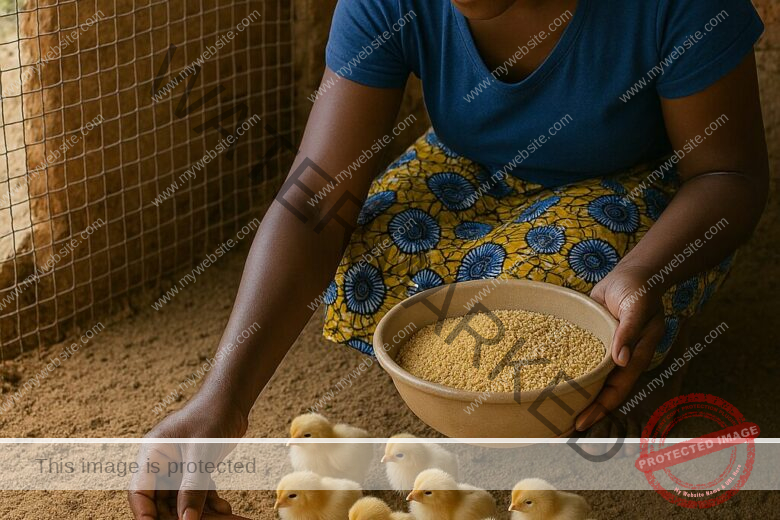
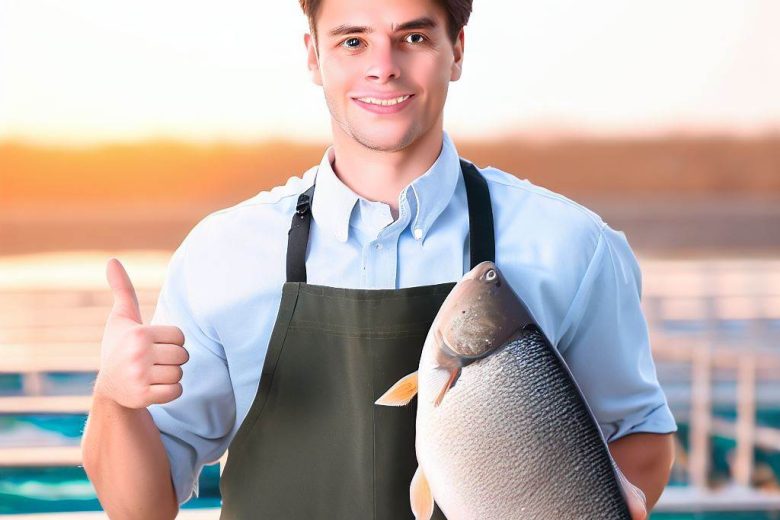

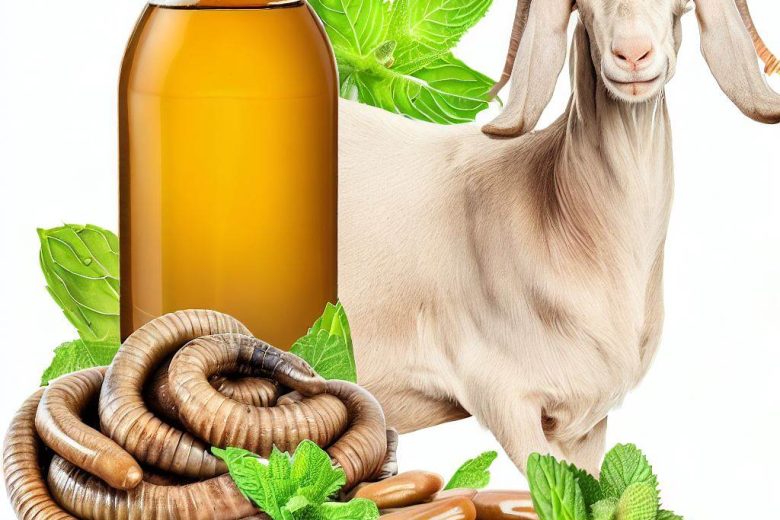
3 Replies to “[Beginners Guide] How To Start Fish Farming In Nigeria”